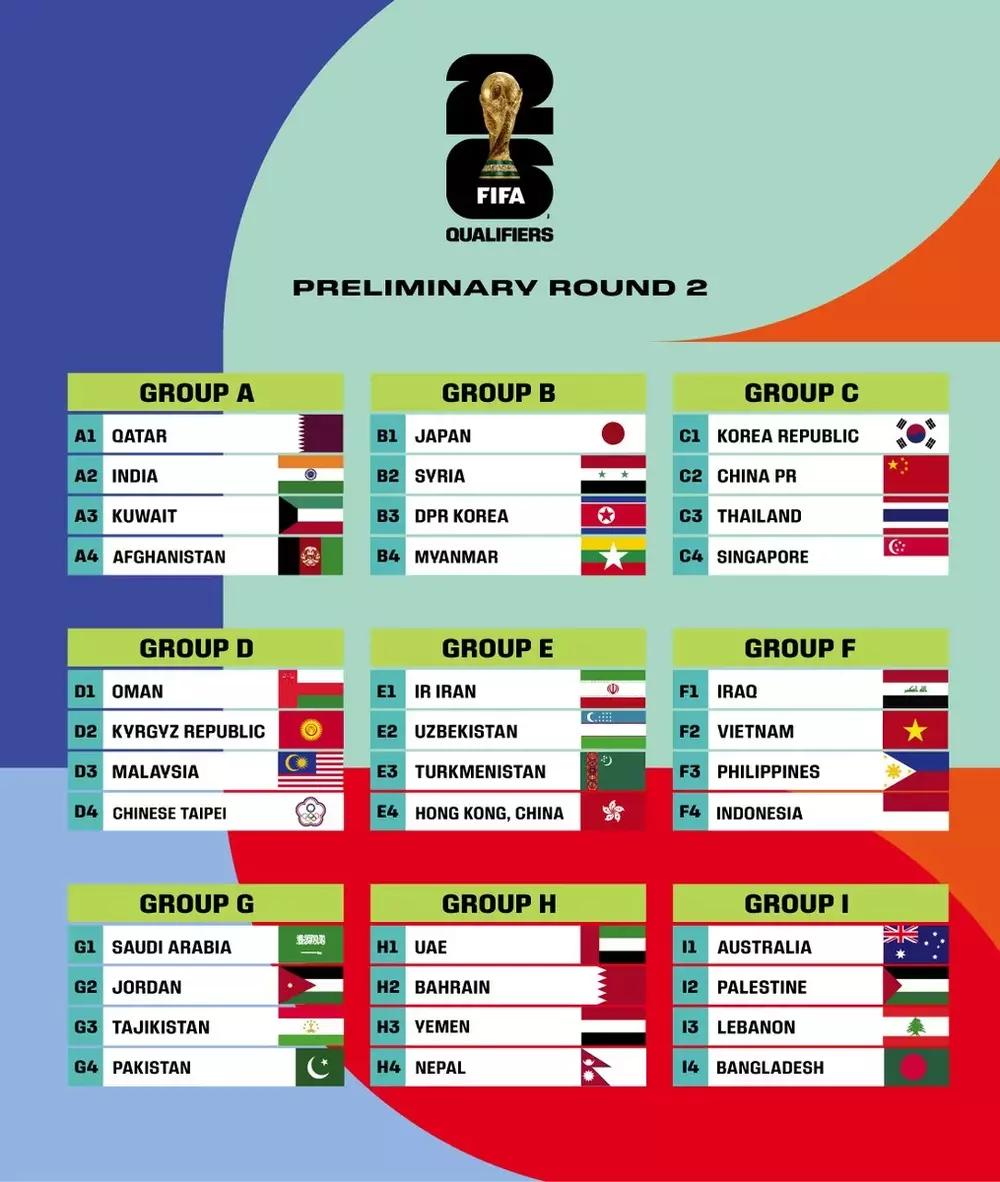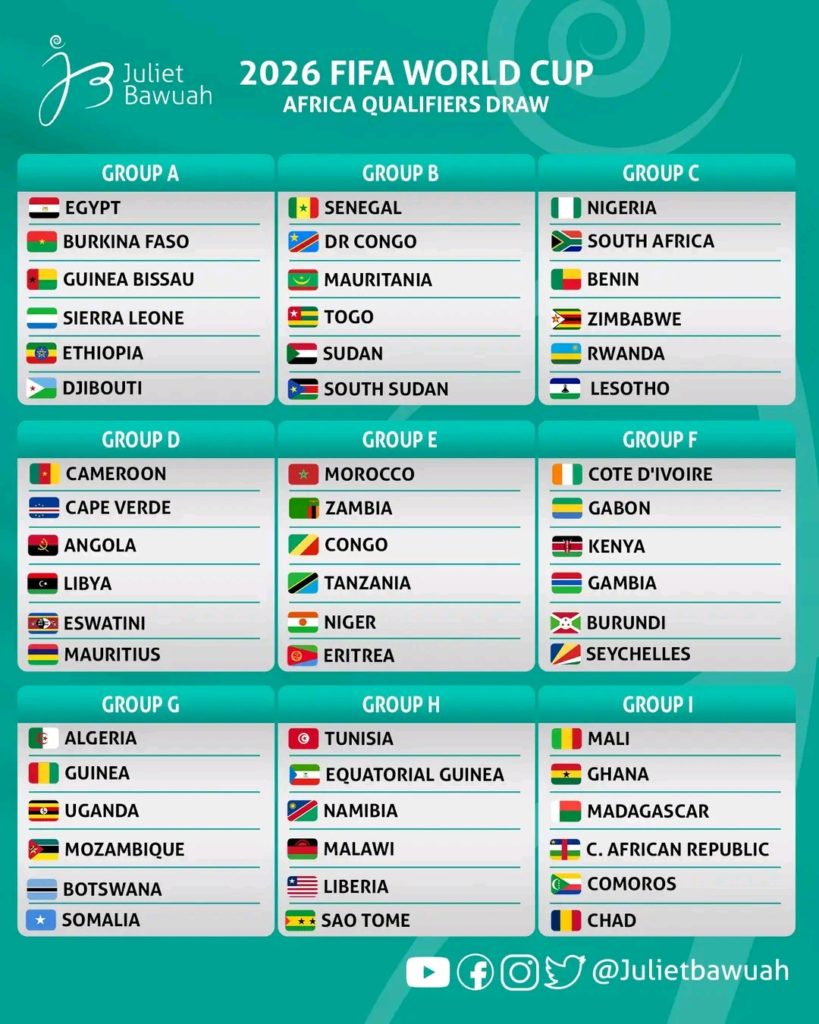
The Road to 2026: A Comprehensive Look at the FIFA World Cup Qualifiers Schedule
The 2026 FIFA World Cup, a spectacle jointly hosted by the United States, Canada, and Mexico, promises to be the largest and most expansive tournament in history. With 48 teams vying for the coveted title, the qualification process will be equally extensive and complex, spanning several continents and years. Understanding the intricate scheduling of these qualifiers is crucial for fans eager to witness their nation’s journey towards the grand stage. This article provides a detailed overview of the expected qualification schedule, highlighting key dates, regional variations, and the challenges and opportunities presented by this expanded format.
The Expanded Format: A New Landscape
The 2026 World Cup’s expansion to 48 teams significantly alters the qualification landscape. Previously, the allocation of qualifying slots was relatively straightforward. Now, the increased number of participants necessitates a more intricate and geographically diverse qualifying process. This expansion, while creating more opportunities for nations to participate, also adds complexity to the scheduling and logistical aspects.
CONCACAF: A North American Showdown
The CONCACAF region, encompassing North America, Central America, and the Caribbean, will benefit significantly from the expanded format, securing at least six automatic qualification spots, plus a potential play-off berth. The qualification process within CONCACAF is expected to be a multi-stage affair, potentially involving preliminary rounds, group stages, and a final round of matches.
The specific schedule within CONCACAF remains subject to confirmation by FIFA, but it’s anticipated that the qualifying campaign will commence in late 2023 or early 2024. The preliminary rounds will likely feature smaller nations competing for advancement to the main group stages. The group stage will then see the region’s stronger teams battling it out for a place in the final round, often a hexagonal group, determining the automatic qualifiers and play-off contenders. The exact format and number of teams in each stage will be determined by FIFA in due course. However, given the participation of the three host nations – the USA, Canada, and Mexico – the competition for remaining spots will be fierce.
UEFA: Europe’s Contested Path
UEFA, encompassing the majority of European nations, will have a significant number of qualifying slots allocated. The exact number is yet to be officially confirmed, but it is likely to be around 16, reflecting Europe’s strong footballing tradition. The UEFA qualification process is traditionally a grueling affair, with teams battling it out in a series of group matches followed by play-offs for the remaining spots.
The UEFA qualifying schedule is expected to kick off in March 2025, continuing throughout 2025 and potentially extending into early 2026. Given the intense competition within UEFA, the qualifying matches are likely to be highly anticipated and closely contested. The group stages will involve a complex arrangement of pairings, ensuring a diverse and challenging schedule for each participating nation. The play-off rounds will then decide the remaining teams to join the automatic qualifiers. The draw for the UEFA qualifying groups is eagerly awaited by fans across Europe.
CAF: Africa’s Long Journey
The CAF (Confederation of African Football) region is expected to see a significant increase in its World Cup representation, possibly doubling its number of qualifiers. The qualification process for CAF is typically a lengthy one, involving several preliminary rounds, group stages, and play-offs.
The CAF qualifying schedule will likely commence in 2024, stretching over a considerable period to accommodate the large number of participating teams. The preliminary rounds will serve to filter out the weaker teams, leading to a series of group matches involving the strongest African nations. The group winners will then progress to the final round of matches, potentially involving play-offs to determine the final qualifiers. The intensity and competitiveness of the CAF qualifying matches are legendary, reflecting the continent’s passion for the beautiful game.
AFC: Asia’s Contested Battles
The AFC (Asian Football Confederation) region will also see an increased number of qualifying slots. The AFC qualification process is usually a complex affair, typically involving multiple rounds of group matches, with the top teams progressing to the final stages. The exact number of qualifying slots for the AFC is still to be finalized.
The AFC qualifying schedule is expected to begin in early 2024, with a series of preliminary rounds weeding out weaker teams. The group stages will then pit the stronger Asian nations against each other in a battle for the precious qualifying slots. The final stages will likely involve a further series of matches to determine the qualifiers. The intense rivalry and fluctuating fortunes of Asian football make their qualifying process highly unpredictable and exciting.
CONMEBOL: South America’s Fierce Competition
CONMEBOL (Confederation of South American Football) is renowned for its highly competitive qualifying process. While the exact number of qualifying slots is yet to be confirmed, it’s likely to remain relatively consistent, reflecting the region’s strong footballing pedigree. The CONMEBOL qualifiers typically involve a round-robin format, with each team playing every other team twice, home and away.
The CONMEBOL qualifying schedule is anticipated to commence in early 2024, spanning over a period of approximately two years. The round-robin format guarantees a highly competitive and unpredictable campaign. The top teams will automatically qualify, while the remaining spots may be decided through play-offs. The CONMEBOL qualifiers are always a thrilling spectacle, known for its high-scoring matches and intense rivalry between South American giants.
OFC: Oceania’s Challenging Path
The OFC (Oceania Football Confederation) represents the smallest continental confederation, facing a particularly challenging path to qualification. The OFC’s qualifying process often involves a series of preliminary rounds, culminating in a final playoff against a team from another confederation.
The OFC qualifying schedule is expected to start early, possibly even in 2023, to accommodate the travel distances and logistical challenges. The preliminary rounds will narrow down the field, leading to a final playoff match against a team from another confederation. This inter-confederation playoff represents a significant hurdle for Oceania, requiring exceptional performances to secure a place in the World Cup.
Conclusion: A Global Spectacle Unfolding
The 2026 FIFA World Cup qualifiers promise to be a global spectacle, unfolding over a period of several years and encompassing a diverse range of playing styles and competitive levels. The expanded format introduces new challenges and opportunities, creating a more inclusive and globally representative tournament. While the specific details of the scheduling remain subject to confirmation by FIFA, the anticipation is palpable, with fans around the world eagerly awaiting the commencement of the qualifying campaigns and the exciting journey towards the ultimate footballing prize. The coming years will witness a fascinating tapestry of matches, rivalries, and triumphs, shaping the composition of the 48 teams that will grace the pitches of the United States, Canada, and Mexico in 2026.



